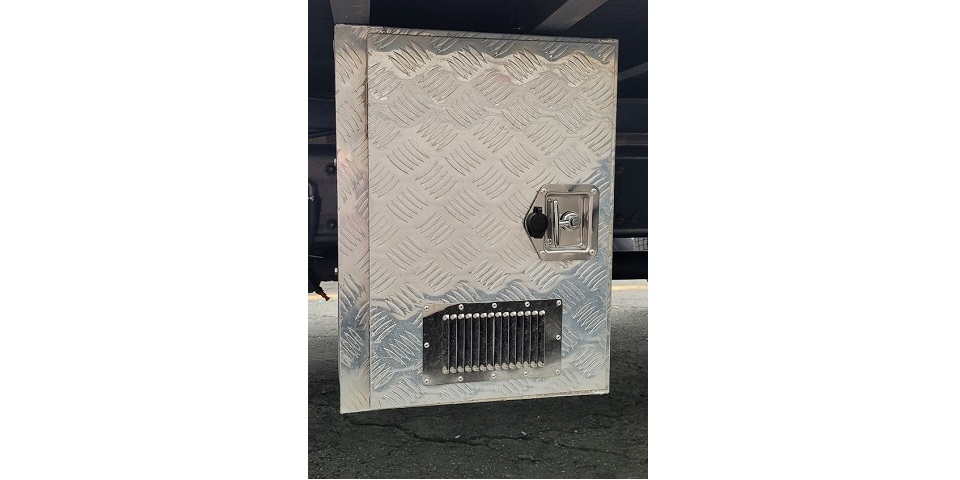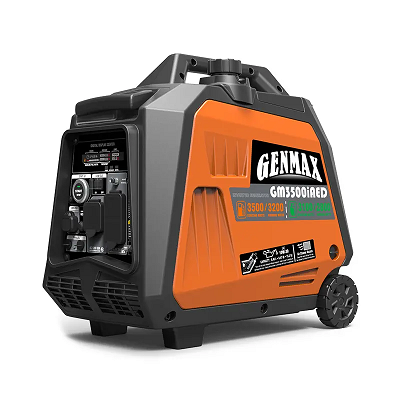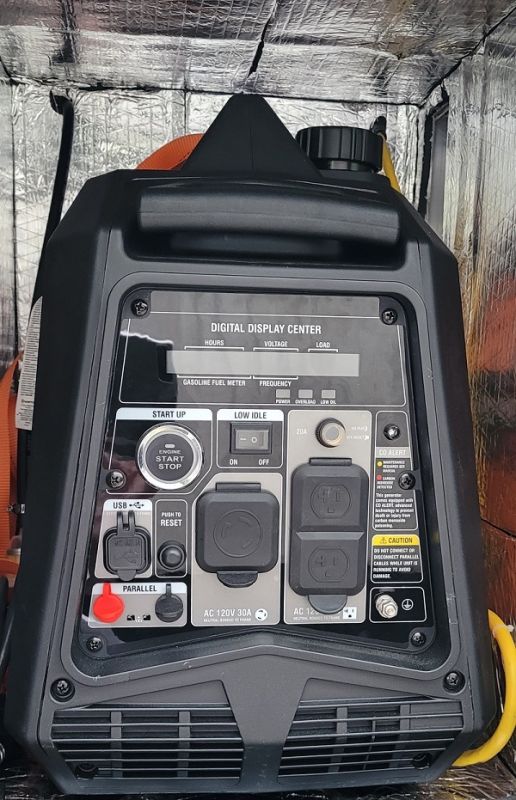Fuel for Thought

New APU - Part 1
Okay folks, in my last blog, Auxiliary Power, I noted some of the differences between different widely available APU options available in the commercial vehicle market. I listed several types and some of their pros and cons. I intentionally left out one particularly popular choice, the Onan generator. Those who know of it, know that it is quieter than the average APU. This is absolutely true, however, the Onan line of quiet diesel generators do not provide anything other than power, where an APU like a Thermoking or Carrier Comfort Pro not only provides power but climate control as well. Most would agree that the Onan diesel generator is one of the best around but it will also set you back many thousands of dollars just to have a generator.
What initially prompted me to find a new or better way to provide auxiliary power to my truck was noise. I was looking for a more affordable, quieter option.
After quite a few sketches, a lot of research and a little trial and error, I decided to build an “APU”. I looked at my inverter first. It is only 3000 watts and handles everything I need it to power except for air conditioning and heating, and it is by no means maxed out with everything that I use it for running. Next I looked at the air conditioning and heating watts and amps that I needed. Once I took all of this into account, I started looking for a generator, a gasoline generator (More on why I chose gas over diesel later).
I definitely required a remote start. The ability to start the generator from the comfort of the cab, not having to get out in bad weather to crank it and no pull starting (except as a back up) was a must. I decided, based on my needs, that a generator somewhere between 3500 and 4000 watts would suffice. I decided on the GenMax GM3500iAED Inverter Generator. This unit is small and powerful. It produces clean power for sensitive electronics. It is quiet, especially compared to a diesel APU. It is lightweight, only around 55 pounds dry weight. It has dual 20 amp outlets and a single 30 amp outlet. It also has dual 5 volt USB outlets, which at the time of purchase I did not think I would ever use ( I was wrong and am very happy the USB outlet was available). It only has a 1.7 gallon fuel tank, and although it sips gas, more is needed. It also has a great display panel to see things like run time hours, voltage output and wattage being used.

Of course, out of the box, I set it up, added oil and gas and test ran the new unit before continuing the project. I added a few test loads to make sure my calculations were correct and once it passed the tests, it was time to start on the rest of the project.
We have all seen generators on catwalks and gas cans swinging by a bungee cord behind the sleeper of a truck. I would not be happy with that installation. I wanted a more streamlined look, something that would match the rest of the truck. I chose to add a toolbox to the truck for securing the generator as well as protect it from weather, vandalism and theft. And this little powerhouse will fit in a small space. I have mine in a 24”L X 18”W X 24”H tool box and there is some room to spare. However, an aluminum toolbox would only amplify the sound of my new quiet generator and make it louder, so I lined the inside with a sound deadening/heat shield material similar to what you find under a car hood. I then cut out openings in the front and rear of the box and added louvered covers to give the generator air flow and also help deter water from getting inside. I added a couple of brackets inside to use for securing the generator to the box with a cam buckle strap, no sense in letting it just bounce around inside. Now I have what looks almost like an ordinary tool box to house my new APU.

I connected my new generator to my already installed HVAC unit on my Carrier Comfort Pro. All that unit requires is AC power, which is easy enough to connect. If you do not already have an HVAC box to use, this small powerful generator could be used to run a rooftop unit or even a mini split unit that so many drivers seem to like.
So far, it seems this is a good alternative to much more expensive diesel generators or APUs, it works well and powers everything in an OEM sleeper plus heat and air conditioning.
Since this is starting to get long winded, I’ll wrap it up for now, but there is much more to come next time. Next time I will go into some of the wiring options as well as fuel options. Also, I have found some additional benefits to this set up that you might find interesting or appealing as well. This new APU setup is far from over.
See you down the road,
Greg
